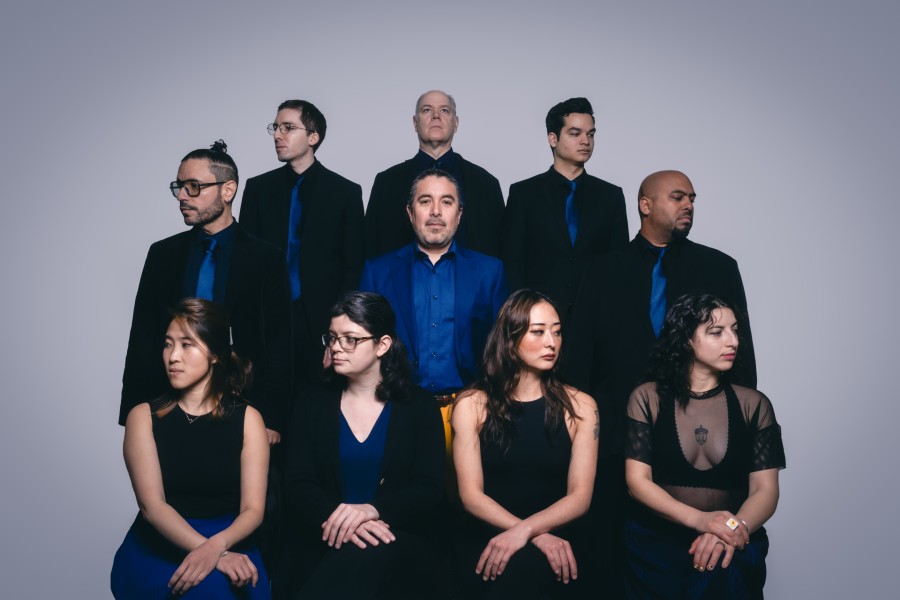 The Silent Protest Parade on Fifth Avenue on July 28, 1917, one of the first major mass demonstrations by African Americans, will be the focus of a special display of four historic photographs at the Beinecke Rare Book and Manuscript Library, on view from Friday, July 21, through Sunday, July 30.
The Silent Protest Parade on Fifth Avenue on July 28, 1917, one of the first major mass demonstrations by African Americans, will be the focus of a special display of four historic photographs at the Beinecke Rare Book and Manuscript Library, on view from Friday, July 21, through Sunday, July 30.
Conceived by James Weldon Johnson and organized by the National Association for the Advancement of Colored People (NAACP) in Harlem with church and community leaders, the protest parade united an estimated 10,000 African Americans who marched down Fifth Avenue from 55th to 59th streets to Madison Square, silently carrying banners condemning racial violence and racial discrimination. The march was held in the wake of brutal episodes of mass racial violence in the city of East St. Louis, where between 50 and 200 African Americans were murdered and 6,000 were left homeless by arson attacks. The marchers indicted the U.S. and President Woodrow Wilson, who had just pledged to make the world safe for democracy.
“The Silent Protest Parade is among the most important, yet too little remembered, early events in the long civil rights movement in the U.S.,” says Melissa Barton, curator of prose and drama in the Yale Collection of American Literature. The event is also highlighted in her recent book, “Gather Out of Star-Dust: A Harlem Renaissance and the Beinecke Library,” published to accompany an exhibition about the Harlem Renaissance she curated at the library from January 13 – April 17, 2017, drawing on the library’s extensive James Weldon Johnson Memorial Collection of African American Arts and Letters.
The Beinecke Library will display four photographs of the march made by Underwood and Underwood in 1917. The photographs are drawn from the personal papers and archives of Johnson and his wife, Grace Nail Johnson, at the Beinecke Library. The library will also have reproductions of the original, signed petition from the protest, available for visitors to read and take as a commemorative keepsake.
“The photographs on display, which Johnson himself had along with scrapbooks that document the protest and its coverage in the media, convey the power of the 1917 protest,” Barton notes. “As a library, we seek to inspire individuals to engage the past, in the present, for the future. One hundred years later, these photographs and the event they document continue to have much to say to our nation.”
As Barton writes in her book, and the four photographs show, throughout the demonstration the only sound came from the drums leading the procession. Behind the drummers marched a small band of NAACP officers and other organizers, including W.E.B. Du Bois and Johnson, who had joined the NAACP as a field secretary just eight months previously.
Also heading the procession was a group of children dressed in white, followed by women dressed in white, emphasizing the vulnerability of the victims in East St. Louis and throughout a country plagued by racial violence. Finally, men in dark suits brought up the rear, with banners expressing their outrage at racial injustice.
Racial tensions had reached record levels throughout the U.S. in 1917. The mass migration of African Americans from the rural south to northern urban centers — what would become known as the Great Migration — was well underway, and the ensuing tensions were exacerbated by competition for housing and jobs. The white supremacist order had mounted a fierce backlash, while organizations like the NAACP and African American churches met the growing racial violence with a consolidation of black political power.
A flyer distributed by the NAACP in advance of the 1917 protest enumerated the many reasons to participate with the refrain “We march … .” These included, “We march because the growing consciousness and solidarity of race coupled with sorrow and discrimination have made us one.”
The events in East St. Louis proved to be just a precursor for the summer of 1919, when violence broke out in cities throughout the country including Chicago, Washington, D.C., Omaha, Nebraska, and Knoxville, Tennessee. Johnson call the season “Red Summer.” But, in spite of that reversal, the Silent Protest Parade had established the organization of mass protest as possible. As he wrote in his autobiography Along this Way: “The streets of New York have witnessed many strange sights, but, I judge, never one stranger than this; certainly, never one more impressive.”
Related articles
- Atlanta Artist Corey Barksdale Selected as Muralist for Dr. King Monument Project funded by Georgia Tourism Product Development Grant (pr.com)
- Hand Pump Well At 139th Street, NY 1898 (Photograph) (harlemworldmag.com)
Become a Harlem Insider!
By submitting this form, you are consenting to receive marketing emails from: Harlem World Magazine, 2521 1/2 west 42nd street, Los Angeles, CA, 90008, https://www.harlemworldmagazine.com. You can revoke your consent to receive emails at any time by using the SafeUnsubscribe® link, found at the bottom of every email. Emails are serviced by Constant Contact








